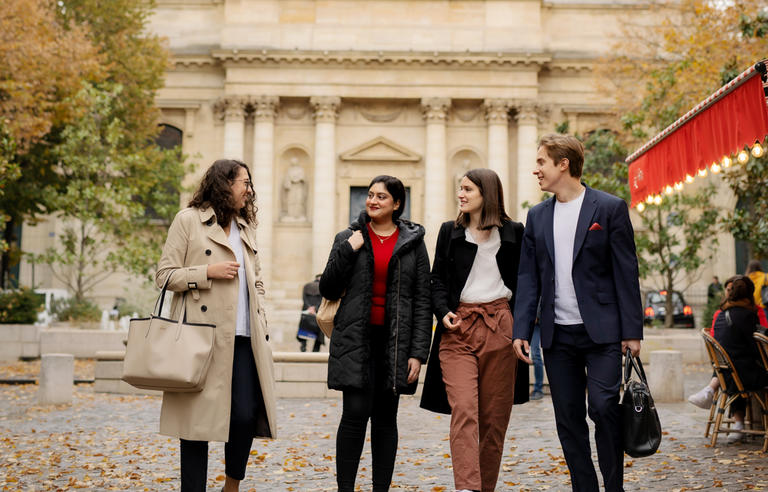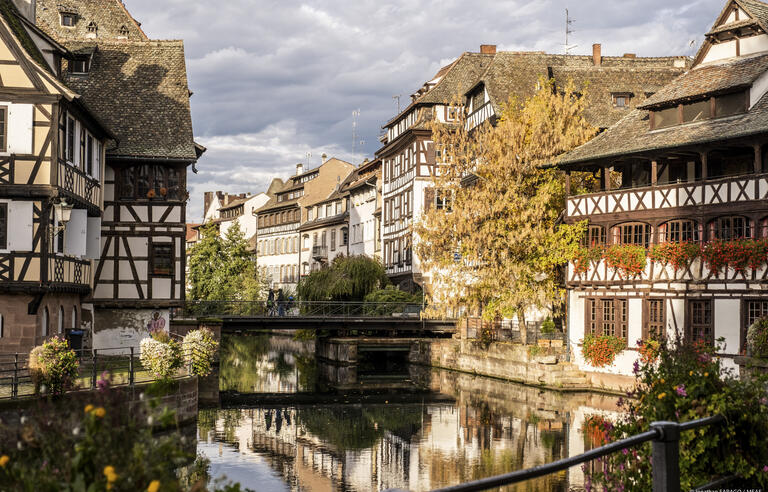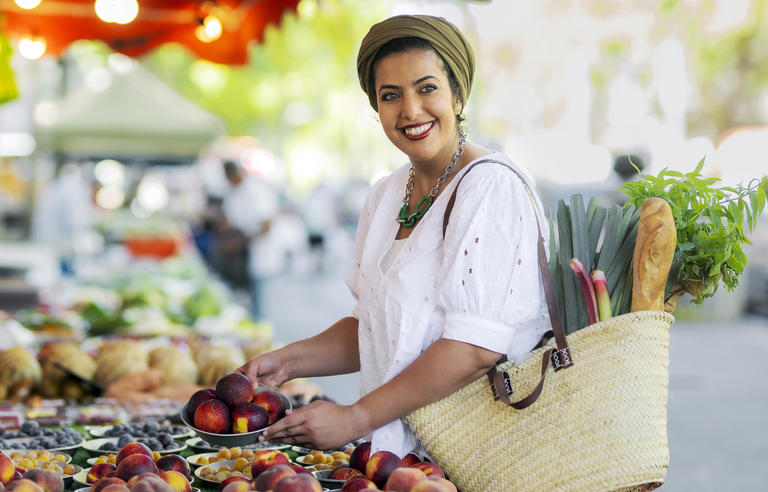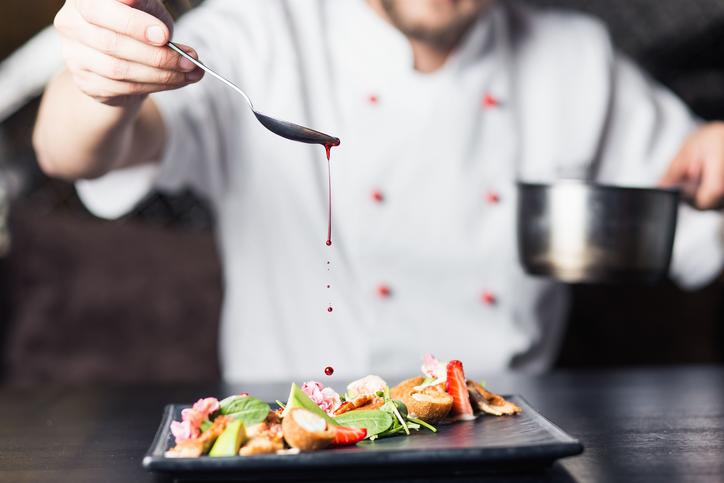France is the land of wine and cuisine. One is rarely seen without the other. Each region has its own culinary specialties and it will take more than just one trip to explore them all. Forks at the ready - Taste!
A rich culinary tradition
France is internationally recognised for its gastronomy and way of life. Since 2010, the French gastronomic meal and its rituals have been recognised as an intangible UNESCO cultural heritage. The special attention paid to the pleasures of the table can also be found in everyday life. The French are very attached to the three-meal day. Traditionally, a sweet breakfast is eaten early in the morning, a light lunch at around 1 pm and then a hearty dinner at around 8 pm.
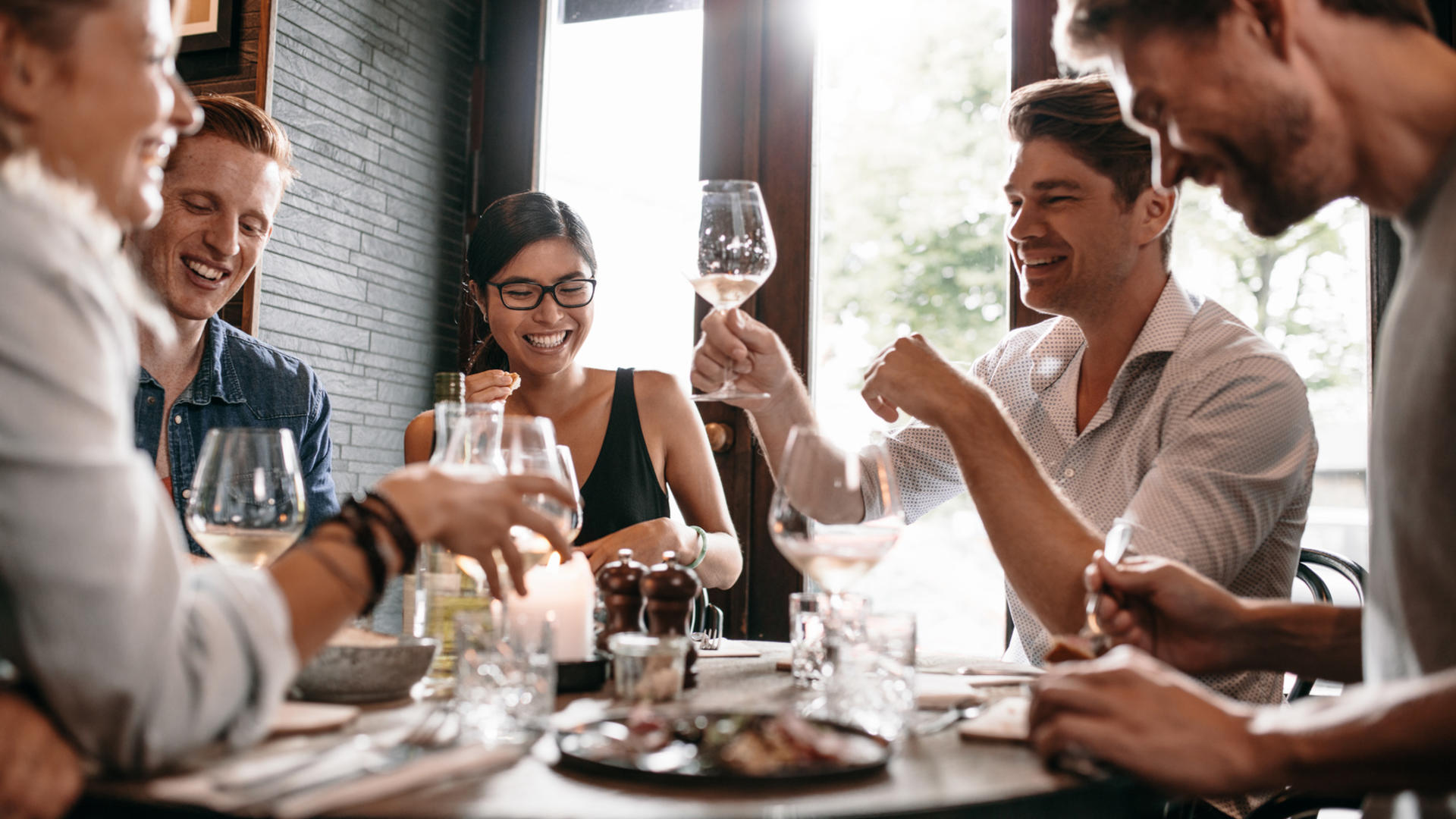
The tradition of Apero
L'apéro (or apéritif) is sacred in France. It usually starts around 6pm, an hour or so before dinner, and is a moment where you can unwind over a cocktail (or two) and finger food. It’s not about getting drunk: it’s about spending time together and preparing your palate for the meal to follow. In the winter in the French Alps, a very popular Apero is the vin chaud (mulled wine), and during summer when days are getting longer, apero becomes one of the country's favorite activities.
It usually a relaxed and informal meeting where guests take their seats where they please, allowing a larger number of people (and children) to mingle and move around. The cutlery is optional!
Apero can also be a full meal, and is called “un apéro dînatoire”. There’s no fixed length for an apero. It can last any where from 30 minutes to 3 hours. Sometimes, it’s just a quick drink with olives. But most of the time, it’s much more than that.
Try this typical phrase to impress your french host : “Tu viens pour l’apéro ? On peut s’installer sur la terrasse.” (Are you joining us for an apéro? We can sit on the patio.)
A Tour de France of regional culinary specialities
Let’s start up North. Try some Maroilles cheese or endives with ham. Then head East for the Reims region for a glass of champagne. Continue on to Alsace to eat some delicious sauerkraut or flammeküeche. Nip down to Burgundy with a stop in Franche-Comté for some ginger bread, Cancoillotte and the famous escargots.
In Auvergne Rhône-Alpes, Aligot or Montélimar nougat might keep you from feeling hungry. Pause in a Lyonnais bouchon, one of the small restaurants typical of the former Capital of the Three Gauls, for some quenelles and praline tarte. Then continue your culinary journey to the south. In Marseille and the surroundings, try some bouillabaisse or ratatouille and finish up on a sweet note with some Tarte Tropézienne.
Then head West, for Toulouse. The South-West is the land of foie gras, cassoulet and Roquefort. Go back northwards along the Atlantic seaboard. On the way try some Bordeaux canelés or gateau nantais. Once in Brittany, a heaping platter of seafood followed by a buckwheat crêpe (galette) accompanied by a cup of cider.
End your travels in the Paris region, with all of its specialties, such as Brie. But Île-de-France is also, and especially, the land of pastries: give in to temptation with some St Honoré, Paris-Brest or macaroons.
Finally, for your gastronomic tour to be complete, don't forget to try dishes and foods from overseas, such as the intense vanilla and the spicy cari of La Reunion Island.
Go local, go veggie
Shop at the markets & Travel like a local
Take advantage of the amazing farmers’ markets and bio (organic) shops throughout the country to stock up on fresh fruit and veggies. Food markets are a huge part of the French way of life, and every village (of a certain size) has a weekly market, and they alternate days so you won’t have to venture far to find a market on any day of the week. If you’re in a larger town or city, you’ll find they often have daily markets. It’s the best place to buy seasonal produce, as well as other goodies like bakery goods and occasionally bulk grains.
If the weather is warm, grab a bottle of wine, some picnic-friendly food and find a spot for a picnic!
Veggie fashion in France
With all the hearty and meaty classics like saucisson and duck paté, France isn't well known for its vegetarian scene, but there are more than 1200 restaurants in France that are 100 percent vegetarian and vegan! Plus, a few French staples are already vegan, like the baguette, tapenade, sorbet or ratatouille (a dish from the South of France).
Pastries and sweet treats
If you have a sweet tooth, there is definitely a good pastry shop near you where you can find a chocolate éclair or lemon meringue tart. Restaurants also pay special attention to their dessert menus. It is far from uncommon to be offered a café gourmand - a coffee accompanied by tasty mini-pastries - at the end of a meal.
Great dishes, great wines
In France, wine is the perfect companion of gastronomy. It highlights the dishes and awakens the taste buds. There are vineyards everywhere: in the Bordeaux region, Burgundy, Alsace, Champagne, the Rhône valley, the Loire valley and the Mediterranean coast. There are even a few in Paris, on the heights of Montmartre. Visit the countryside and try its wines as you sample its cuisine. But always in moderation, of course.
An international culinary hub
France is a multicultural country open to the world, with varied and mixed cuisine. Most big cities have a large number of Chinese, Indian, Italian, North African, and African restaurants - and more. If you're feeling homesick, you shouldn't have too much trouble finding specialties from back home.
Vegetarians, pasta lovers, meat-eaters or fast-food fans, will find what it takes to sate your appetite and taste buds.










